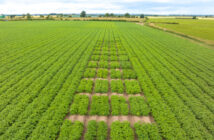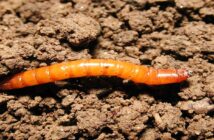UN plans to mitigate global warming by burying atmospheric carbon in the ground to enrich soil are laudable but currently flawed, conclude a group of scientists from five international research institutes across Europe and the United States.
The experts address a goal to offset rises in atmospheric greenhouse gas concentrations by increasing the storage of carbon in soil by four parts per thousand (4P1000) per year. The goal was launched at COP21, the 21st annual Conference of Parties to review the United Nations Framework Convention on Climate Change (UNFCCC), in Paris in 2015.
“The point we are making is that the rate of carbon accumulation in soil that is suggested, 0.4% per year every year for 20 years, is almost certainly unattainable in many situations,” says David Powlson, Lawes Trust Senior Fellow at Rothamsted Research in the UK. Using data from Rothamsted’s Long-term Experiments Powlson and his colleagues at the institute are already studying the feasibility of changes in land use and farming practices that achievement of the UN goal would require.
“It would therefore be unwise for policy makers to rely on this rate of carbon sequestration across the globe,” Powlson adds. “It would be best to focus on regions and situations where it can more easily be achieved. However, no-one wishes to criticise the positive and laudable aims of the initiative.”
Powlson, a leading expert in soil carbon, is co-author of the opinion paper published in Environment Science & Technology. The paper, which focuses on the role of nitrogen in trapping carbon in soil, echoes reservations among many soil scientists about the goal’s misunderstanding of basic chemistry.
“In principle, the 4P1000 goal is great,” says Jan Willem van Groenigen, professor of soil quality at Wageningen University in the Netherlands and the paper’s lead author. “Generally speaking, more carbon is good for almost any soil. If we could combine that with slowing down climate change, that would be a double win. The problem is that the numbers don’t add up.”
The soils of the world contain around three times the amount of carbon in organic matter as currently held in carbon dioxide in the atmosphere. Increasing this stock by 4 parts per thousand per year could, in theory, fully compensate the rise in atmospheric carbon dioxide. But to store more carbon in the soil, other nutrients are needed, such as nitrogen.
“You cannot build a house with a pile of bricks and no mortar,” says Kees Jan van Groenigen, senior lecturer in climate and environmental science at the University of Exeter in the UK and co-author of the paper. “Similarly, you cannot produce soil organic matter with only carbon. You need enormous amounts of nitrogen.”
Where the nitrogen would come from is unclear, he says. “For example, to store the quantity of carbon to achieve the 4P1000 goal, you would need extra nitrogen equivalent to 75% of current nitrogen fertilizer production every year, and for it to be in the right places. Practically speaking, that is just impossible.”.
Does this mean that we should abandon the 4p1000 goals? Absolutely not, says Jan Willem van Groenigen: “Let’s not throw away the baby with the bathwater. The 4P1000 goals are a great inspiration to do everything that farmers, soil scientists, agronomists and policy makers can to help fight global warming and, at the same time, improve our soils.”
In an appeal to the scientific community, he calls for more study of the role of nutrients in reaching the 4P1000 goal. “For instance, this could mean that additional soil carbon should be stored in areas where nutrients are also available. In other soils, the best approach might be to focus on minimizing emissions of other greenhouse gases, such as nitrous oxide and methane.”
The opinion paper was written by colleagues from the University of California at Davis, Northern Arizona University (USA), Wageningen University and Research Centre (Germany), University of Exeter (UK) and Rothamsted Research (UK)




